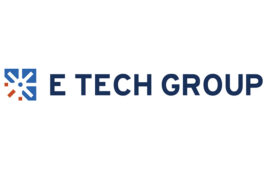While every medical device business founder daydreams of pre-revenue exits and unicorn valuations, it is imperative to plan for the long and unpredictable haul.
Richard F. Mattern, Bass, Berry & Sims PLC

[Image from Unsplash]
Your corporate focus and related legal needs can shift through your medical device company’s life cycle as it grows.
Surviving the burn (early stage)
While operating initially on a shoe-string budget is possible, the initial funding, whether in the form of a “friends and family” raise or out of the founder’s pocket, will be quickly exhausted. Furthermore, medical device startups regularly find themselves in an extended and ever increasing cash burn position, which often exceeds $500,000 per month. Thus, the company will likely have to raise a significant amount of capital from professional investors. Despite the tendency of the terms and structure of those investments to evolve over time and by investor type, the capital raising tips below are generally applicable.
- Be prepared. Professional investors will need a concise presentation and a specific plan for the capital supported by reasonable projections and assumptions. Don’t overstate the opportunities or understate the challenges. They will know. Finally, since raising capital can be a time-intensive process, start the process as far in advance as possible, and have the deal team and data room ready to go. You can’t afford any time lags.
- Assemble the “right” team. The management team is crucial to an investor and the long-term success of the business. Investors want a management team that has industry experience and the skill sets to grow the company. Similarly, the company should engage experienced counsel who understands the industry and current market terms. The initial raise is very important as those terms (especially the unfavorable ones) will find their way into future raises.
- Get more than money. Taking on a professional investor is the beginning of a long-term relationship. Don’t be blinded by prestige or the largest checkbook. Instead, find the partner who shares your vision for the company and the industry, has a complementary skill set, is willing to dig in when times get tough and has relationships that will open doors in the future.
- Raise more money than you need. If you have access to capital on reasonable terms, take more money than you need. While no one suffers dilution well, consider that running short on capital, even temporarily, could irreparably harm the business. Also, a down-round financing, which comes with additional transaction costs, demoralizes the employees and existing investors. And when the capital need becomes apparent, the funding window may have closed due to micro or macro factors outside of the company’s control.
Expanding the bag (middle stage)
Regardless of the innovative or revolutionary nature of your initial product offerings, employees, customers and investors alike will be clamoring for the company to expand its bag. While organic product growth is always available, it can be slower and less predictable. To expedite the process and create more certainty around execution, medical device companies regularly use acquisitions to supplement internal research and development efforts. Here are 2 ways this can happen:
- Strategic mergers and acquisitions. Strategic M&A is a calling card of the medical device industry. While recent mega-mergers, including Abbott-St. Jude, Johnson & Johnson-Synthes, Medtronic-Covidien and Zimmer-Biomet have dominated the headlines, the Wright Medical and Tornier merger is an excellent example of utilizing strategic M&A to expand the bag. By combining Wright Medical’s lower extremity and Tornier’s upper extremity product lines, the result was the premier extremity-biologics company. While strategic M&A can be a one-stop fix, note that it requires substantial capital, generally in the form of cash or public equity. And if your company has innovative but limited product offerings, you are more likely “prey” than “predator.”
- Opportunistic IP or product acquisitions. As an alternative to strategic M&A, companies search out opportunistic IP or product acquisitions from sellers, who are typically trying to monetize non-essential/non-core or older/prior generation assets. Also, strategic M&A can lead to isolated sales to address regulatory concerns or to divest non-core or overlapping IP or products. For example, to obtain FTC approval of the Zimmer-Biomet merger, Zimmer sold a knee product to Smith & Nephew and an elbow implant to DJO Global.
Expanding the reach (late stage)
With capital available and a fuller bag of products, company focus often sharpens on revenue growth. While revenue growth can take many forms, expanding the company’s sales channel, which can be effectuated by increasing sales personnel and/or leveraging technology, is a common and highly-effective option.
Increasing sales personnel tends to be accomplished by hiring additional employees, expanding the distributor network or acquiring additional employees or distributors in a strategic M&A. While each approach can further the objective, it is also important to understand the related drawbacks. Hiring additional employees tends to have the lowest upfront cost, but generally takes time; increases selling, general and administrative expenses (SG&A); and taxes your HR department. An expanded distributor network increases the sales channel with the added benefit that you only pay for performance (unlike the relatively fixed cost of an employee), but those relationships often are transitory, and the non-compete implications tend to be thorny. While strategic M&A provides a one-stop solution for both expanding the bag and the reach, it comes with a high upfront cost and requires careful integration as the added personnel may overlap with existing personnel.
Leveraging technology is the other option. As with any other industry, technology can be a meaningful differentiator. By using a web-based, customer-direct sales channel, certain medical device companies are offering products, which are typically nearing the end of their life cycle, at a lower price point, especially when coupled with limited or non-existent sales, distribution or clinical support. As a result, the company can service price-sensitive customers, which efficiently and effectively expands sales territory, while maintaining appropriate margins. For example, NayaMed, a Medtronic affiliate, has effectively utilized a web-based approach to service price-sensitive customers in the cardiac space.
Richard F. Mattern is a member in the Memphis, Tenn., office of Bass, Berry & Sims PLC. He represents both public and private companies in a variety of corporate and securities law matters, with a particular focus in the medical device industry.






